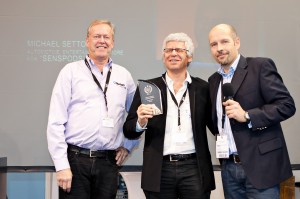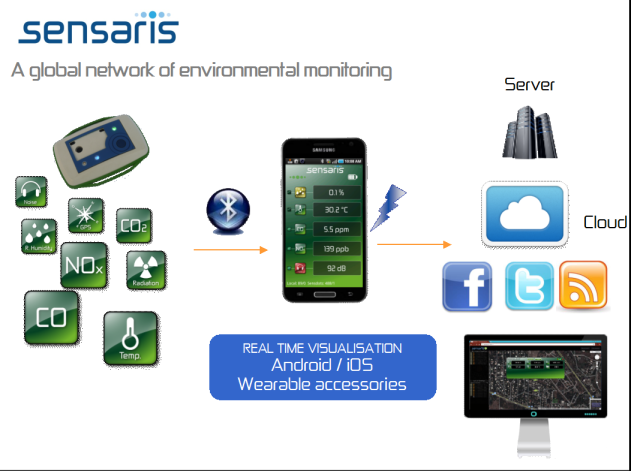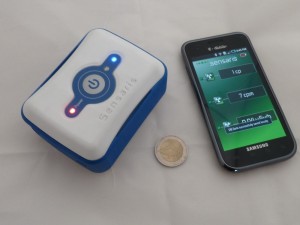Recently an interesting article indicated that a low cost Android from Huawei is already used by 350 000 kenyans.
“It seems like just yesterday when only the slickest kid on the block had a smartphone, but now,this revolutionary gadget is selling like hotcakes in the developing world. Earlier this year, the
Chinese firm Huawei unveiled IDEOS through Kenya’s telecom titan, Safaricom. So far, this $80 smartphone has found its way into the hands of 350,000+ Kenyans, an impressive sales number
in a country where 40% of the population lives on less than two dollars a day. The IDEOS’s success in this market firmly establishes the open source Android as the smartphone of the
people and demonstrates how unrelenting upswings in price-performance can jumpstart the spread of liberating technologies. Thanks to low-cost Androids, the geographically-untethered
smartphone is here to stay, and it simply cannot be stopped.”
In June 2011, Huawei and Safari Telecom signed a memorandum of understanding for technology transfer with 3 kenyan universities. Dr Bitange Ndemo, the Permanent Secretary in the Ministry of Communications indicated that he sees 90% of phones being smartphones in the next 2 years.
That same month, , Safaricom and Telkom Kenya announced they were embedding health services into their product offerings. It is not an altruistic endeavour however, as both companies hope the move will see their profit margins increase, after prices wars have devastated the countries telecom sector in recent months.
Much of the focus will initially be on rural areas in the country through the virtual clinics, which the telecom companies said would bring in “modest” consultation fees. The mobile operators claim users will make huge savings on money spent on travel and logistics associated with hospital visits.
Safaricom’s Health Presence will be equipped with facilities to read a patient’s vital signs – including temperature, pulse rate, blood pressure and respiratory rate. On the other end, the doctor on call will be able to read the vitals on a computer and together with the patient’s narrative, is able to give a diagnosis and prescription or refer the patient to a health clinic.
The e-health centres will be housed in digital villages set up by Safaricom. It has put up 800 digital villages and plans to put an additional 5,000 by end of this year.
Sylvia Mulinge, the general manager of Enterprise Business Unit at Safaricom, said
“In the first year, we will have 30 per cent of the digital villages equipped with the health presence facility,The project is meant to take affordable and quality health care to the common person. One should be able to consult a professional medical practitioner at under $2 (Sh168). This would in ordinary circumstances cost one in excess of Sh2, 000, when one factors in travel costs and other logistics.”
Adapting our products and services to meet new challenges.
Emerging countries are quickly embracing mhealth technologies and it is not a coincidence if the GSMA first mobile health Summit took place in South Africa in June.
Shipments of budget Android phones priced at around the US$150 mark numbered just 2.5-3 million units in 2010, the vast majority of which were split between ZTE (ZTE Racer model, review and specs here) and Huawei (IDEOS, review here) .
Sales of such phones are expected to grow to more than 20 million units in 2011. Huawei plans to ship between 12 and 15 million Android powered devices this year,At a time when healthcare budgets are being re-examined, it is clear to us that mHealth can contribute to improving quality care without requiring substantial investments. To encourage this move, we have ported all our mobile health applications to this IDEOS phone: software packages for our biomedical devices in the Senspacks (thermometer, glucometer, blood pressure monitor, pulse oximeter) are all available now for such entry level smartphone. Granted the low resolution takes some getting used too after using higher end smartphones,the screen keyboard is tiny and it can be annoying to type SMS messages, and more annoyingly the battery life is awful BUT does it really matter when it sells for $ 80 in Kenya and for 8300 rupees in India ?
To us, not really because we believe that these are small issues compared to improving the lives of thousands of people and enabling a faster diffusion of mobile health to save lives.
Sensaris will release new mobile health solutions for diabetes management and for maternal, newborn child health in the near future with a particular focus on these new platforms for emerging countries.









Recent Comments